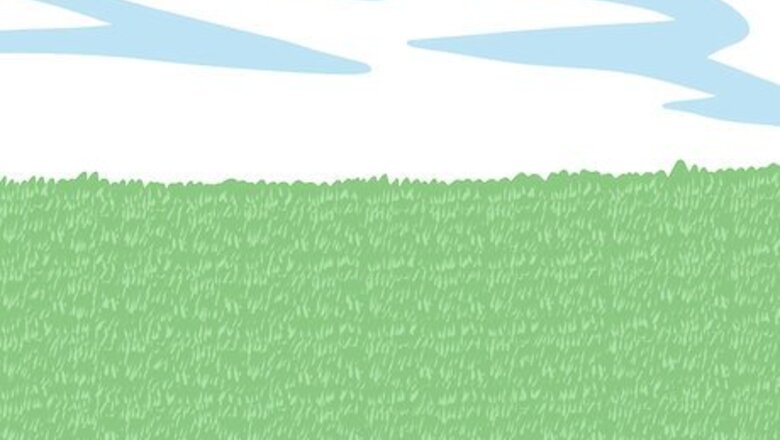
views

Grow drought-tolerant grasses. Most grasses commonly used in lawns can withstand periods of dormancy quite well, but some are better than others. Buffalo grass, zoysia grass, fine-leaf fescues, tall fescues, and older, "common" varieties of Kentucky bluegrass (in that order) are the most tolerant of drought stress. Perennial ryegrass and newer, "improved" varieties of bluegrass require more water to keep the dormant plants alive. The more drought-tolerant your grass, the longer it will stay green without watering, and the less you'll have to water it to keep it alive while it's dormant.
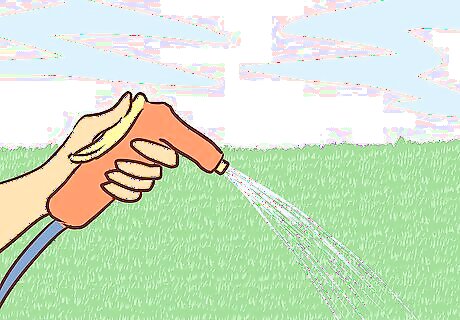
Make sure your lawn is healthy. Newly sodded or seeded lawns should not be allowed to go dormant, as they are not well enough established to survive drought conditions. In addition, grass with excessive thatch buildup, grass that has been damaged by insects or disease, or lawns in poor soil generally do not tolerate drought-induced dormancy well. In all these cases, you should water your lawn regularly to keep it green.
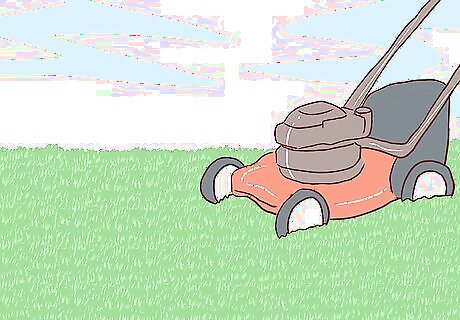
Keep your mower blade high. When the grass is still green and growing in the spring, mow with a sharp blade set at a height of 3" to 3-1/2" (7.6 - 8.9 cm). Allowing your grass to grow relatively high like this will increase its drought tolerance. As a result, the lawn will stay green longer before going dormant.
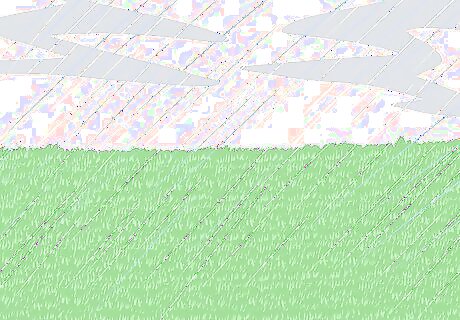
Allow your grass to go to sleep. In areas with mild winters, grass may be green all winter long, while in other areas it will come out of winter dormancy and green up with increasing spring temperatures and rainfall. As long as there is adequate rainfall, your grass will stay green without you having to water it. When precipitation decreases and/or temperatures increase, the lawn will turn brown and go dormant unless you water it. At this point, you can stop watering at any time to allow the grass to go to sleep. Once you stop watering, you can generally allow the more drought-tolerant varieties above to go up to 4-6 weeks without water before you need to water again. Rye grass and newer varieties of bluegrass generally shouldn't go more than two weeks without water.
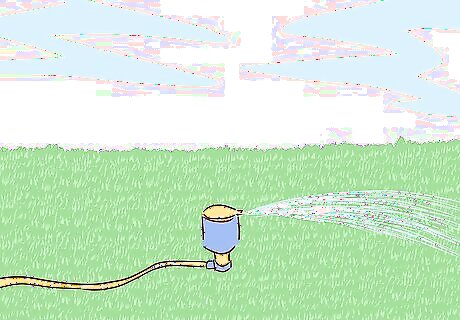
Understand a dormant lawn's water needs. Dormancy is the grass plant's natural response to survive periods of inadequate water. If the dormant lawn goes several weeks or a month without water, though, it typically will not recover, even when thoroughly watered later. The exact amount of water you will need to give your sleeping lawn needs depends on the temperatures, the humidity, and the amount of precipitation it receives naturally, but as a rule of thumb you should apply at least 1/2" (1,27 cm) of water after the initial 4-6 weeks of drought. You should then apply at least 1/2" (1,27 cm) of water every 2-3 weeks thereafter for as long as drought continues. If your summers are particularly hot and dry, as they are in the desert areas of the southwest U.S., for example, most grasses will require more water than this to survive. Buffalo grass and zoysia grass, however, generally require less water than bluegrass and fescue, and rye grass requires up to twice as much. Note that these waterings are only intended to keep the underground portions of the plant alive, and you typically won't notice any greening of the lawn above ground.
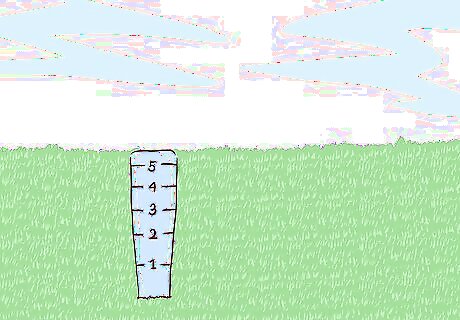
Measure precipitation. Get or make a rain gauge to determine how much precipitation your lawn is getting, and keep track of this precipitation. Don't rely on your local weather reports, because these may not accurately measure the amount of rain that actually fell on your lawn.
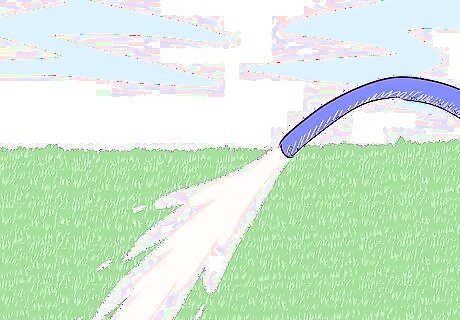
Water the lawn enough to keep the grass alive. While you should make sure your sleeping lawn gets at least 1/2" (1,27 cm) of water every 2-3 weeks (as stated above), this doesn't necessarily mean you have to water it that much. If your lawn is already receiving that much rainfall (as measured by your rain gauge), you don't have to water the grass at all. You only need to water enough to make up for any difference between your lawn's needs and the natural precipitation it receives.
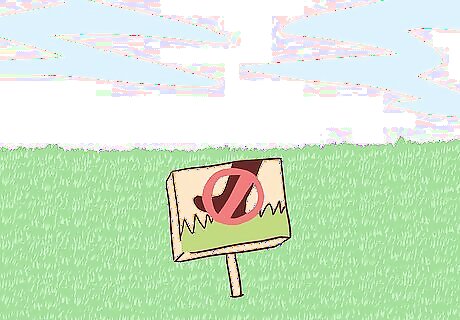
Minimize traffic on your lawn. Dormant grass is already stressed, and heavy foot or vehicle traffic may kill the grass and cause bare spots in the lawn. If traffic is unavoidable on a certain area, water it regularly to keep the grass green and healthy.
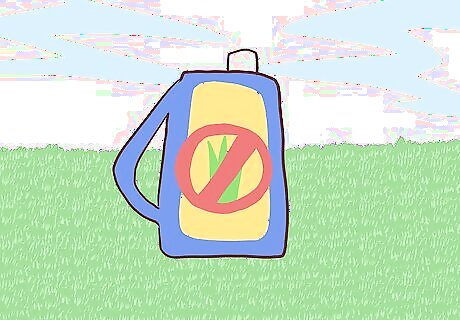
Control weeds without herbicides. While the lawn sleeps, native weeds may still be wide awake. It's best to follow a system of integrated pest management (IPM) to control weeds in any lawn. If you're concerned specifically about weeds in your dormant lawn, simply pull the weeds, making sure to get the roots out. Dormant lawns do not tolerate herbicides well.,
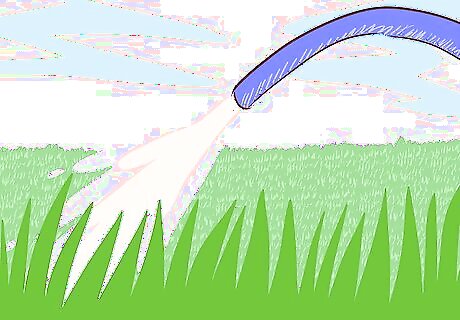
Thoroughly water the lawn to "wake it up." If the lawn has been kept healthy throughout dormancy, it should begin to green up with the advent of cooler temperatures and more precipitation. To jump start the process, water the lawn thoroughly when the extreme heat of summer has passed, applying enough water to penetrate the root zone 6-12" (15 - 30.5 cm) below ground. After 2-6 weeks of cooler temperatures and adequate precipitation, the lawn will be lush and green again. With a little help, this can sometimes be sped up - perennial ryegrass has been known to go from completely dormant to green in 4 days with thorough irrigation.

Fill in any bare spots. As long as the dormant grass is sufficiently watered and properly maintained, the lawn will often make a full recovery when it comes out of dormancy (see the Tips section below for more information). If, however, you notice bare spots or thin patches in the fall, simply apply a light covering of compost and reseed the grass in those areas.

















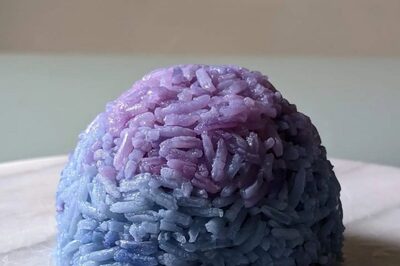

Comments
0 comment